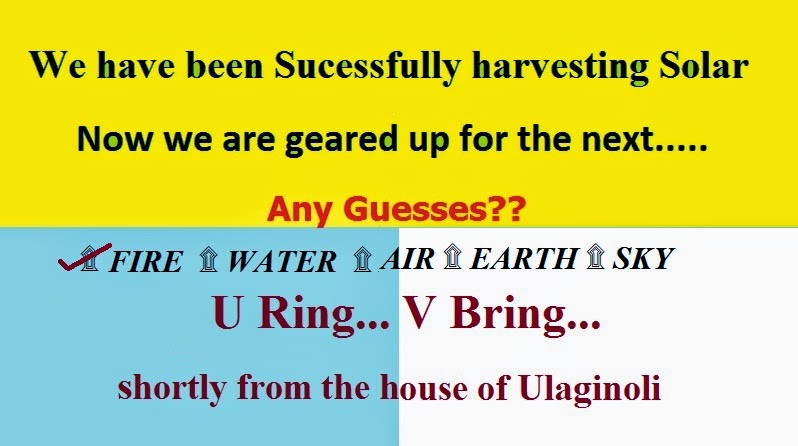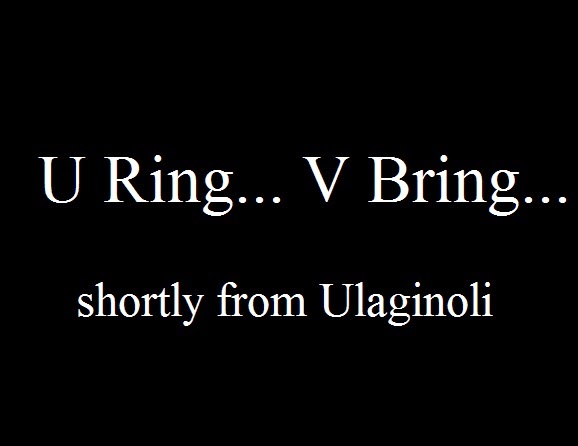At Ulaginoli, we are in no mood to reduce our prices
Article Source: http://www.re-solve.in/perspectives-and-insights/solar-pv-systems-can-prices-go-down-further/

The last few years have seen drastic reduction in the prices of Solar PV systems due to global industry dynamics. Are these price drops sustainable? Can investors and developers base their decisions on the assumption that PV prices will continue to fall?
(Editor’s note – This article was written by RESolve at the end of October 2012 and was published in MNRE’s(Ministry of New and Renewable Energy) magazine – Akshay Urja – in December 2012(available here). In the article, we had mentioned that the PV module prices will not continue to go down any further, based on the underlying trends at that time. This has been confirmed in the last 2 months. Germany based pvXchange GmbH has highlighted that the module prices have been continuously increasing during February 2013 and March 2013 .GTM Research has also confirmed the price increase. The price increase is attributed to factors like the anti-dumping duties across various geographies, the domestic demand for modules in China and the growth of the Japan solar market. This has enormous implications for the projects set to be installed under the various state policies like Tamil Nadu, Andhra Pradesh, Punjab, Uttar Pradesh, etc)
Introduction
In July 2012, India became one of the few countries outside Europe to install more than 1 GW of solar power projects. India installed most of these project in less than two years – in December 2010, the cumulative installed capacity of solar was less than 10 MWp. This remarkable success of solar in India can be attributed to the Ministry of New and Renewable Energy(MNRE) and the state of Gujarat. MNRE, through its flagship solar program – the Jawaharlal Nehru National Solar Mission(JNNSM) – allotted more than 1000 MW of solar projects(Photovoltaics and Concentrating Solar Power) during the first phase of the Mission. Similarly, Gujarat also signed Power Purchase Agreements(PPAs) for about 1000 MW in 2010-11.
While the policy and regulatory environment played a critical role in the ramping up of solar capacity in India, the impact of the sharp reduction of prices of solar systems, especially PV systems which have fallen by more than 40% in the last 3 years, cannot be overlooked. The critical question is, will the price of solar PV prices continue to drop or will they start increasing from now?
PV price drop – the factors
PV prices dropped significantly in the last 3 years primarily due to the rapid changes in the global solar markets. In particular, the price reduction can be attributed to demand and supply imbalance and the global recession.
- Excess supply and Recession of 2008 – Supported by attractive Feed-in-Tariffs in Spain and Germany, there was a huge demand for Solar PV till 2008. But during the same period, Polysilicon, the raw material for crystalline silicon PV modules, was in short supply. In order to address this shortage of PV materials, most existing and new PV companies started adding large amount of production capacity in all parts of value chain. Chinese companies built massive production capacities that were also vertically integrated. The scale and the vertical integration of these Chinese companies helped them reduce the prices tremendously. In the meantime, the recession of 2008 caused a crash in the Polysilicon prices. The prices feel from about $350/kg in 2008 to about $20/kg during mid-2012. This drop in Polysilicon prices caused the price of c-si modules to drop by more than 50%. These two drivers – massive production capacity build-up and crash in input costs(of Polysilicon) – resulted in huge price drops of PV.
- Drop in demand – After the recession in 2008, Spain put an end to its FiT and many other countries like France followed. Even though Germany and Italy periodically reduced their FiTs, the drop in module prices made the PV projects financially attractive till end of 2011. However, after the revision of FiT by Germany effective from January 2012, the demand for PV fell drastically.
The mismatch in supply and demand caused by the above factors and the crash in prices led many PV manufacturers to either go bankrupt or to opt for restructuring. Significant amount of PV inventory had to be liquidated by selling them at a loss.
The drop in PV prices globally had an impact on the PV projects in India as well. The Central Electricity Regulatory Commission (CERC) notifies the benchmark capital costs for solar PV for every year. The benchmark cost for the most recent 4 years is given below.
From the chart above, it can be seen that the system price has dropped by 41% (Rs. 17 Crores/MWp to Rs. 10 Crores/MWp) during the period 2009-10 to 2012-13.
The most striking result of this price reduction has been the tariff realisation achieved during the JNNSM reverse bidding. In the first batch of the Phase 1 of the JNNSM, the CERC had set a reference price of Rs. 17.91/kWh. However, the average tariff realised was much lower at an average price of Rs. 11.8/kWh. The situation became even more interesting in the second round. As against a reference price of Rs. 15.39/kWh, the average tariff realised was about Rs. 8.80/kWh. The lowest price was about Rs. 7.49/kWh, which is a drop of about 50% from the CERC price of Rs. 17.91/kWh within a span of less than 2 years.
System cost/system components/cost breakdown
Some of the major components of a PV system and their benchmark cost breakdown per MWp as provided by CERC is given below.
(Update : CERC came up with the benchmark cost for 2013-14 during mid-November 2012. The details are available here).
At the time of writing, several project developers have been able to execute projects at less than Rs. 8 Crores/MWp. For the purpose of this analysis, only numbers provided by CERC will be used.
From the data given in the table above, it can be observed that even though price of the system has been dropping, not all of the individual components are seeing reduction in prices. While PV module and inverter prices have dropped, the prices of almost every other component have remained stable or have increased. Why is this happening and what are the implications? Let us examine these in some more detail.
Modules:
The price of modules has seen the biggest drop. From about $2/Wp in early 2011, the module price has dropped by about 60% to $0.80/Wp in mid-2012. This can be attributed to the excess supply of PV modules mentioned earlier. However, we do not expect it to fall further because
- Consolidation of the industry is leading to a reduction in production capacity
- Tightening input costs(cells and other materials)
The share of module in the system price has dropped to about 45% from earlier 60%.
Inverters:
Inverter prices saw drops of about 50% from $0.36/Wp in 2009 to about $0.18/Wp in mid-2012. The demand-supply dynamics for inverters were quite different from the modules segment. In 2010, inverters were in short supply and the average delivery times were about 6 months. As a result, price of inverters increased during this period. However, 2011 saw an oversupply of inverters in the market and subsequently the price of inverters also dropped. The situation is expected to linger in 2012.
Unlike PV module segment where Chinese companies have more than 50% of market share, there are very few Chinese suppliers of top tier inverters. According to IMS Research, Chinese companies accounted for less than 3% of inverter revenues in 2010. Due to this situation, non-Chinese inverter companies have been making healthy profits. This also means that the inverter companies have the time and money to come up with technology improvements and cost reductions.
Due to the dynamics mentioned above, it is expected that inverter prices will come down further in the next few years.
Materials:
One of the major costs associated with a solar PV project are the mounting structures and electrical cables. While the mounting structures are made of galvanised steel or aluminium, electrical cables are made of either aluminium or copper. Cement concrete mixture is also used for mounting structures and for other civil works like foundations for control room, transformer stations and office blocks.
All the materials used above are commodities and are also used in other growth sectors like construction, heavy industries and several other industries. The demand from these sectors is tied to the macroeconomic conditions and as the global economy continues to slowly grow, the prices of these materials are expected to escalate over the next few years.
Evacuation(including transformers):
Most of the materials/equipment used in solar PV projects are also used in other segments like wind and conventional power plants. Since these equipment are highly standardised, there is not enough room for price reductions. In fact, the prices are expected to go up in line with the general inflation.
Civil and other works
Cost of civil and other works(laying roads, earth moving, civil work for mounting structures, etc) has been relatively stable and have been increasing as per the general inflation. There is a significant labour component in the civil works and it is quite likely that the cost of the civil works will only go up, unless significant amount of automation is adapted.
Land
The land cost is currently a very small percentage of the total project cost and naturally does not have a huge impact on the returns of the project. But land prices have seen big increases in places which have good solar irradiation. In the future, it is quite likely that availability of cheap land might become a challenge.
Pre-operative expenses
The pre-operative expenses include cost of contingency, insurance, project management costs and other similar expenses. With the increase in knowledge in solar power plant construction, the pre-operative expenses have been reducing quite significantly. However, it is unlikely that the pre-operative expenses will go down further. It could either increase or remain stable.
Conclusion
The PV capital costs have been reducing drastically over the few years, thereby bringing solar closer to the traditional fuel sources. The increased affordability of solar has helped the penetration of this renewable energy source in almost every part of the world, including India. However, it is quite likely that the PV capital cost has hit the bottom. PV module prices are likely to remain stable at the current price levels for the medium term, while inverter prices could go down further. But the decrease in inverter prices will be negated by the increase in prices of other Balance of System(BOS) components like steel, electrical equipment, cables and other services.
However, a major technology breakthrough – increased efficiencies of modules, inverter technology or other aspects of the system – has the potential to completely change this dynamic. But that is something very few people can predict at this stage.




